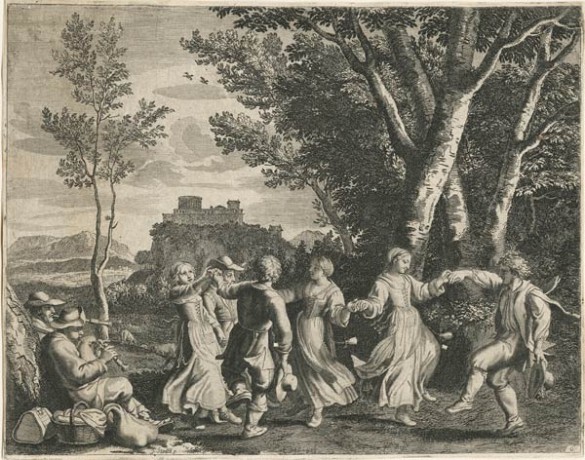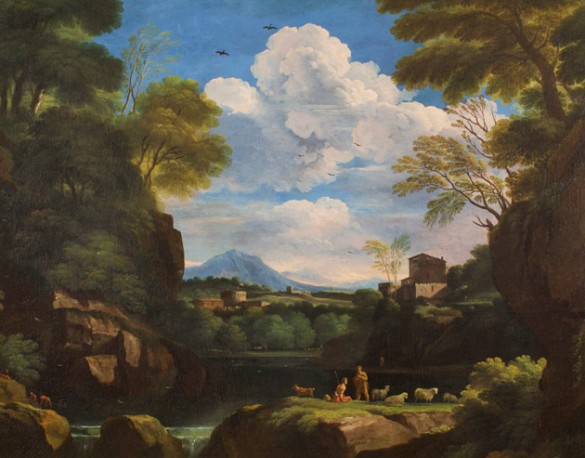
“Pastorals, Landscapes and the Arcadian Vision,” on display at the Vanderbilt Fine Arts Gallery from June 10 through Sept. 9, explores how artists for centuries have rendered nature in a tranquil, idyllic form. The exhibition features more than 50 paintings and works on paper from the 17th to 20th centuries.
Summer gallery hours are Tuesday through Friday, noon–4 p.m.; Saturday, 1–5 p.m.; and closed Sunday and Monday. Beginning Aug. 24, gallery hours will be Monday through Friday, 11 a.m.–4 p.m.; Saturday and Sunday, 1–5 p.m. Admission to the gallery is free.
The mythologized Arcadia, a mountainous region on the Peloponnesian peninsula, emerged in the first century BCE when the Roman poet Virgil wrote the Eclogues and Georgics. These poems recreated Arcadia as a place of country life in its purest form, removed from the civilized city and where rustic shepherds subsisted on the meat and milk of their herds.
Virgil’s contemporary Horace wrote Ut Pictura Poesis, “as is poetry, so is painting,” inspiring generations that followed to understand how these two artistic mediums work in tandem. A selection of poetry excerpts spanning several centuries is included in the exhibition to reinforce this relationship.

Pastorals often have been created as a fiction for an educated, urban audience. Whether manifesting in poetry or in the visual arts, this genre helps the consumer envision a peaceful and harmonic world in contrast to an urban one of bustle and conflict. In painting, this reached a new height during the Italian Renaissance through works by Titian and Georgione, the latter particularly influenced by the Italian poet Jacopo Sannazzaro’s Arcadia (1504).
Vanderbilt’s holdings begin to tell the story through the 17th-century Dutch Italianate painters and printmakers Jan Both and Nicolaes Berchem and with delightful, intimate etchings by the Dutch genre artist Adriaen van Ostade. All three of these artists’ works reflect the widely held contemporary view that nature should be improved upon in poetry and painting.
The exhibition traces the steady popularity of landscapes in France through the works of Claudine Stella (1636–97), Philippe Caresme (1734–96) and Théodore Rouseeau (1812–67). Additionally, there are two small woodcuts by Aristide Maillol (1861–1944), created as illustrations to Virgil’s Georgics and Eclogues.
Paintings and prints by English and American artists also are included. While the dates of these landscapes span several centuries, the close connection between poetry and the visual arts is the thread that links them together. Thomas Nason’s Connecticut Pastoral, 1936, represents the longevity of this relationship, as Nason was one of Robert Frost’s primary illustrators in the early 20th century.
“Pastorals, Landscapes and the Arcadian Vision” is organized by the Vanderbilt University Fine Arts Gallery and curated by Joseph S. Mella, director. It is supported by the Ewers Gift for Fine Art and the Sullivan Art Collection Fund.
The gallery is located on the second floor of Cohen Memorial Hall, located at 1220 21st Ave. S. on the Vanderbilt Peabody College campus.
For more information, visit the gallery’s website or call 615-322-0605.